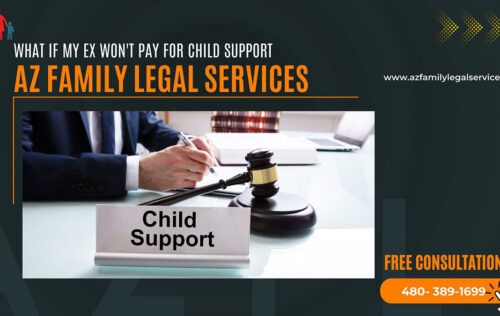ARIZONA FAMILY LEGAL SERVICES
CHILD SUPPORT
Arizona Child Support Guidelines

In 2018, the Arizona Supreme Court adopted new child support guidelines. This blogpost will discuss these changes and the overall Arizona child support structure.
Arizona Child Support Guidelines follow the Income Share Model. This model was developed by the Child Support Guidelines Project of the national Center for State Courts. The Income Share Model calculates the total child support amount by approximating the amount that would have been spent on the children if the parents and children were living together. By this calculation, the parents contribute their proportionate share of the total child support amount.
Child support is prioritize over every other financial obligations in law. This is not just for Arizona but for all the United States. Federal and state policy has aligned and prioritized the support of children as the number one financial obligations. The guidelines are not set in stone and the courts are allowed to deviate. However, non-support related financial obligations generally are not a reason for the court to deviate from the guidelines.
It is important to also know the difference between spousal maintenance and child support. Spousal maintenance, or what used to be colloquially known as alimony, is when one parent pays the other parent money based on the living status of the two parents. Child support is a completely different calculation.
Child support obligations run until the presumptive date of termination, which the court will set upon the initials child support order. The presumptive termination is the last day of the month of the 18th birthday of the youngest child in the court order. This will change if the youngest child is not projected to complete high school by age 18, which then the presumptive date will be the last month of the anticipated graduation date or age 19, whichever occurs first.
There are certain factors that will affect the ultimate child support that a parent is obligated to pay. These include:
- Cost of health insurance;
- Which party actually pays the health insurance premium;
- Daycare costs;
- Which party actually pays the daycare expense;
- Medical needs and extraordinary needs to the children;
- Any extraordinary educational need of the children;
- Number of children;
- Whether or not spousal maintenance is being paid or received;
- Age of children; and
- Amount of parenting time exercised by each parent.
To determine child support, the gross income of the parents must be determined. The gross income will can come from any source including salaries, wages, commissions, dividends, trust income, and social security benefits. Gross income does not include benefits received from means-tested public assistance programs like food stamps and Temporary Assistance to Need Families (TANF). Adjustments can be made to the gross income, including the factors stated above including spousal maintenance or other child support orders the parent is obligated for.
The Adjusted Gross Income is the gross income minus the potential adjustments by the court. These amounts for each parents will be combined to be the Combined Adjusted Gross Income.
After the Combined Adjusted Gross Income is determined, this figure will be found on the Schedule of the Basic Child Support Obligations for that year and select the column for the number of children. This is the Basic Child Support Obligation. To determine the total child support obligation, the Basic Child Support Obligation is added to the children’s medical, dental, and vision coverage.
These is an extremely truncated explanation of child support calculations in Arizona. To ensure that a parent is paying the correct amount, it is important to have an attorney to look over finances and correctly determine what the court should order.



